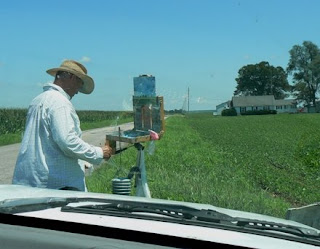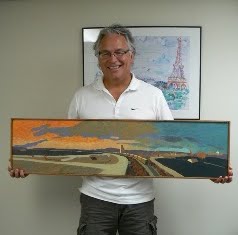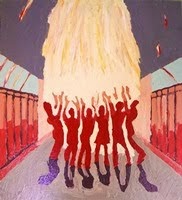
(above and below) Here are close-ups of a 1978 "floor piece," from my senior year at the University of Nebraska-Lincoln. I had my own 10 by 10 foot studio space on the second floor of Richards Hall. The 24 by 36 inch paper was taped to the floor, and I was dropping bits of texture right into the paint. Look closely and you will see sunflower seed shells. A "whole-other-wonderful" strategy was in place to savor and excite.

That "strategy" or "process" was about being physically engaged, reaching over, mindful of the taped edges, precarious steps across the image, looking down, hurling liquid color, drinking in silence that surrounds me, the intermittent cooing of birds from the eaves of Richards Hall outside my window, the sharpness of the temperature in the room, the charged excitement I felt within this Nebraska winter, immersed in the piano and vocals of Billy Joel from my Radio Shack cassette player. Independent, wide open and moving about in my studio space. The swirl of it all, focused, creating, doing, moving, being intentional, occasionally stopping to assess what the image looked like. An entirely different mindset from "landscape painting." Enriched, hands-on, visceral.
In this video you can see the "intention" for yourself. I am watching as I dab. Surely my father worked in a similiar manner, that is, experimenting with materials, and expecting to be surprised by something new. Working from a calculated hunch. Setting the work aside. Coming back, drinking the image in, being open minded. Assessing "which results" I like, entertaining what to do next, moving forward with the next hunch.































































